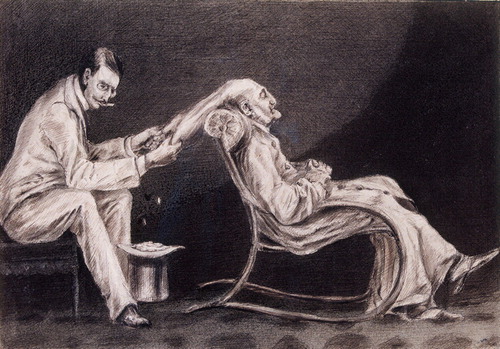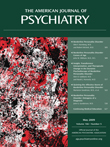Alfred Kubin, 1877–1959
Alfred Kubin is increasingly recognized as one of the most gifted graphic artists of the early 20th century. His many drawings, mostly of modest size and in pen and ink, are meticulously executed and are distinguished by their bizarre, mysterious, erotic, often sadomasochistic imagery. Clearly influenced by the work of such earlier masters as Goya, Hieronymus Bosch, and Max Klinger, they anticipate that of the Surrealists in their use of themes drawn from what appear to be unconscious sources.
In his autobiography Kubin described a profoundly traumatic childhood (1) . His father, a traveling land surveyor, did not appear in his life until he was 2 years old, and Alfred saw him as an unwanted interloper. When Alfred was 10 his beloved mother died, and his father soon was remarried to her sister, who in turn died a year later. A large and powerful man, his father was contemptuous and abusive to his slight, shy, retiring son, who seemed always lost in his fantasies and absorbed in aimless drawing, and Alfred came to hate him with a vengeance. His adolescence was deeply troubled, with frequent depressive episodes and at least one abortive suicide attempt. After he had failed both in school and in an apprenticeship to a photographer, his father permitted him to go from his home in Salzburg to Munich to study art, and it was there that his penchant for drawing flowered.
Father and Son , in which the son is milking coins from his rather decrepit father’s silvery hair, is typical of Kubin’s exquisite way of representing dreamlike, psychologically pregnant fantasy, often, as here, drawn from his own unconscious wellsprings. Though unfamiliar with Freud’s writings, he clearly was in touch with many of the psychological principles that Freud outlined, that same year, in The Interpretation of Dreams.

1. Hoberg A (ed): Alfred Kubin, Drawings, 1897–1909. Munich, Prestel-Verlag, 2008Google Scholar



